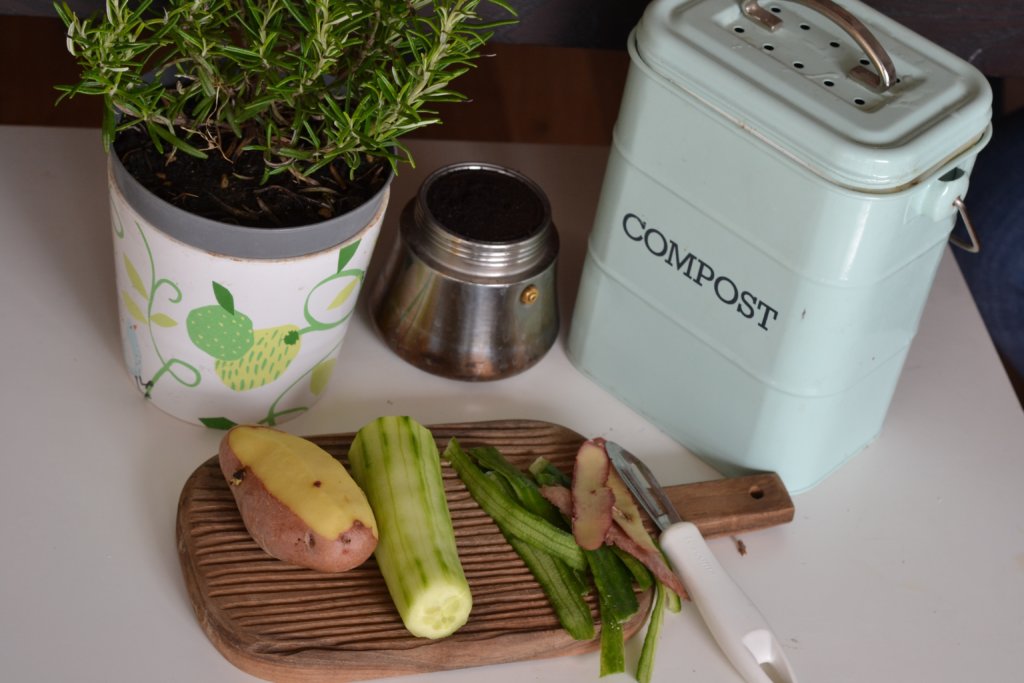Home composting do’s and don’ts
April 22, 2022Are you a composting connoisseur?
Here at HelloFresh, our favourite thing is food – but a close second is sustainability. Composting is one thing that combines both! It’s a fairly easy way to turn your food waste into usable, nutrient-rich soil, and can easily be done at home.
Reducing food waste is step 1 on a more sustainable food journey. HelloFresh offers a great start, since you receive only the ingredients and quantities you need for each meal. You’re already cutting food waste by up to 36% with every meal! If you’ve already read our blog post on six ways to reduce your food waste, you may be ready to tackle home composting.
But what about the other food waste and scraps you’ve accumulated? Depending on where you live, you may have access to a curb-side collection program, which is a great way to divert food scraps and other soiled items like greasy pizza boxes, used napkins, and in some cities, yes, even diapers! If you don’t have access to curb-side collection, or you want to try your hand at creating your own compost (excellent to use in your gardens), we’ve collected some valuable dos and don’ts to help get you started with home composting.
5 composting dos:
Add coffee grounds to your compost
You read that right! Not only are coffee grinds close to pH neutral, they also improve soil structure and are an excellent nitrogen source. Tea bags are also great to add, just make sure the bag isn’t made of microplastic and remove any strings or tags. Tip: allow your tea bags to dry out fully and remove the bag entirely for a less messy and overall better experience.
Keep a balance of green and brown waste
Composting works best with a ratio of 3:1 brown and green waste. Brown compost waste consists of carbon or carbohydrate-rich materials, helping air filter through your compost pile. Brown compost consists of leaves, pine needles, twigs and bark that’s already fallen from trees, sawdust, corn stalks, soiled paper, and corrugated cardboard (minus anything waxy). Green compost are materials that are rich in nitrogen and protein, and tend to heat up your pile, which speeds up the process. Food scraps, eggshells, plant clippings, and certain types of animal manure are all green compost.
Add garden waste to balance your compost
Garden waste, including old potting soil, soft plant stems, and dry grass are all beneficial to your compost pile. For large leaves or grass, chop them up to speed decomposition
Keep your compost moving
New on the compost scene are rotating compost bins, helping to keep your compost rotating and staying warm. This is an easier option than a more stagnant pile, since it’s important to regularly rotate your compost to aid the process. Ideally you want to shift things around every day, but at least a couple times a week is important for optimal results.
5 composting don’ts:
Don’t be afraid to add citrus to your compost
You may have heard that composting citrus fruits is bad for your compost, mainly because of the long decomposition time. The good news is that citrus fruits and peels (like the orange from our lentil citrus salad) can absolutely be composted. Tip: cut up the peels into smaller pieces to speed up the breakdown process.
Avoid adding dryer lint to your compost pile
Unless you can be positive there are no microplastics in your compost, avoid this common tip. Because microplastics are so common, it’s hard to avoid them in your dryer lint. However, if you strictly use natural fibres, a bit of dryer lint can act as a good balance of brown compost.
Don’t add pet waste or litter
Only cow, chicken, horse, sheep, or rabbit manure should be added to your compost: sorry dog and cat owners. Specific conditions need to be met to ensure the right pathogens are inactivated, and compost temperatures would need to reach a consistent high temperature over a few days to ensure any bacteria, viruses, or worms don’t pose a problem to the material. Best to avoid unless you’re a composting expert!
Skip adding meat, bones, and dairy
Meat also requires specific temperatures to ensure composting is successful and kill any dangerous microbes. Adding these items can also attract potential pests, like rodents or flies. And, it can make your compost pile smell pretty funky! Skip these items entirely for a better experience.
Other great uses for your food scraps include pickling watermelon rinds (trust us!), making bread crumbs or croutons from stale bread, regrowing your veggies in water (green onions, Romaine lettuce, and celery are some easy and fun options), and making chicken or vegetable stock out of leftover bones and peels.
And – fun fact – our kit bags are 100% compostable! Remove the stickers and check whether your municipality will accept it in your local green bin program. Composting requirements vary across Canada, so check any city-specific regulations.
There you have it – some easy tips to get started on your home composting. Are you starting your home composting journey? What other advice have you found to help the process? Let us know in the comments or tag us on social media @hellofreshca.

